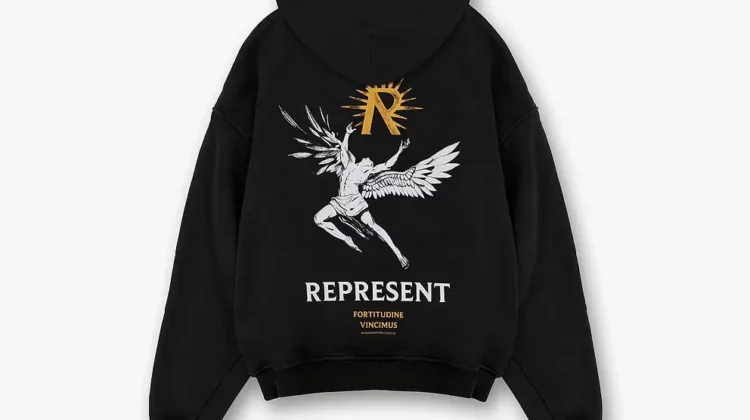
Exploring Clothing in Fashion An Insight into Style, Functionality, and Cultural Expression
Clothing has been a fundamental aspect of human culture Represent Clothing serving as a medium for personal expression, a marker of social identity, and a practical means to protect against environmental conditions. Over time, clothing has evolved from simple, functional pieces into complex fashion statements, influenced by cultural, economic, and technological trends. Today, the fashion industry is a massive global force, with clothing styles that cater to an array of personal preferences and lifestyles. From haute couture to casual streetwear Represent the diversity in fashion allows individuals to explore and represent themselves uniquely through their attire.
The Art of Self-Expression through Clothing Fashion allows
One of the most powerful roles of clothing is self-expression. Fashion allows individuals to communicate aspects of their identity without saying a word. Styles, colors, and silhouettes can convey everything from confidence and authority to playfulness and creativity. For instance, minimalist clothing—characterized by neutral colors and clean lines—might suggest a preference for simplicity and elegance, while bright, eclectic patterns might reflect a bold personality.
Clothing choices can also reflect social groups, personal beliefs, or affiliations. For example, certain subcultures, such as punk, hip-hop, and goth, have developed their own distinct fashion codes. These styles go beyond aesthetics, symbolizing rebellion Represent Sweatshirt solidarity, or cultural pride. In this way, fashion serves as a tool for people to align themselves with specific communities and ideologies. The rise of “gender-neutral” fashion, which defies traditional clothing norms, is another example of how clothing continues to evolve to meet changing societal values, allowing people to explore and express identities in non-binary ways.
The Practical Side of Fashion Functionality and Versatility
While clothing is a vehicle for self-expression, it also has a practical side. At its core, fashion was born from a need to protect the body from the elements. Climate and geography often shape the materials, construction, and design of clothing. In colder regions, thick, insulated fabrics like wool are prevalent, while in hotter climates, breathable materials like cotton and linen are preferred.
Modern clothing has evolved to meet the demands of busy lifestyles. With innovations in textile technology, we now have fabrics that are moisture-wicking, wrinkle-resistant, and even antimicrobial, which makes clothing more functional and convenient. Athleisure, for instance, has become a significant trend as people seek comfort and style in their active Represent T Shirt on-the-go lives. Blending athletic and casual wear, athleisure demonstrates how clothing can be both functional and fashionable, allowing people to move seamlessly between different aspects of their day.
In recent years, there has also been a shift toward sustainable fashion, with clothing companies focusing on environmentally friendly practices. This movement emphasizes using organic, recycled, or upcycled materials, reducing waste in production, and designing pieces with longevity in mind. As consumers become more aware of their environmental impact, the demand for versatile, eco-friendly clothing has increased, transforming the industry and encouraging sustainable innovation.
Cultural Influence and Fashion How Tradition Meets Modernity
Fashion is deeply rooted in culture, with traditional clothing reflecting the values, beliefs, and histories of different communities. For instance, the Japanese kimono, the Indian saree, and the Scottish kilt are iconic garments with cultural significance. These pieces are not only worn as a celebration of heritage but are also adapted and modernized for contemporary wear, blending the old with the new.
In today’s globalized world, cultural exchanges and collaborations have brought unique styles to a broader audience. This cross-cultural influence has led to the incorporation of traditional elements, such as African prints, Indigenous beadwork Represent sweatpant and Middle Eastern kaftans, into mainstream fashion. This blending of styles allows for a richer, more diverse fashion landscape where people can explore and appreciate the clothing traditions of other cultures.
The Role of Fashion Icons and Trends Fashion trends are often driven
Fashion trends are often driven by icons—celebrities, designers, and influencers—who inspire people with their style choices. High-profile fashion events, such as the Met Gala or Paris Fashion Week, are platforms where trends emerge and new ideas are showcased. Social media also plays a significant role, allowing people worldwide to access and engage with the latest fashion innovations instantly.
Fashion icons help popularize styles, often blurring the line between high fashion and street style. What starts on a runway can quickly become accessible to the average person, as fast-fashion retailers replicate high-end designs at affordable prices. However, as awareness around fast fashion’s impact on the environment grows, there is a counter-trend favoring slow fashion, where quality, craftsmanship, and sustainability are prioritized over the rapid turnover of seasonal trends.
The Future of Fashion Digital Innovation and Customization
With advancements in technology, the fashion industry is on the brink of a digital revolution. Virtual reality, 3D printing, and artificial intelligence are being integrated into the design and shopping experience, allowing for greater customization and accessibility. Virtual fitting rooms and online customizations enable consumers to personalize their purchases, creating clothing that better fits their style and body type. This move toward customization allows for a more personal connection to fashion, emphasizing individuality in a mass-market industry.
In conclusion, clothing in fashion is a dynamic blend of art, functionality, and cultural heritage. It is not just fabric stitched together; it is an expression of individuality, a reflection of societal changes, and a medium of personal and cultural storytelling. As the fashion industry continues to evolve, so too will the role of clothing, adapting to new societal values, technological advancements, and the changing demands of consumers around the world.


